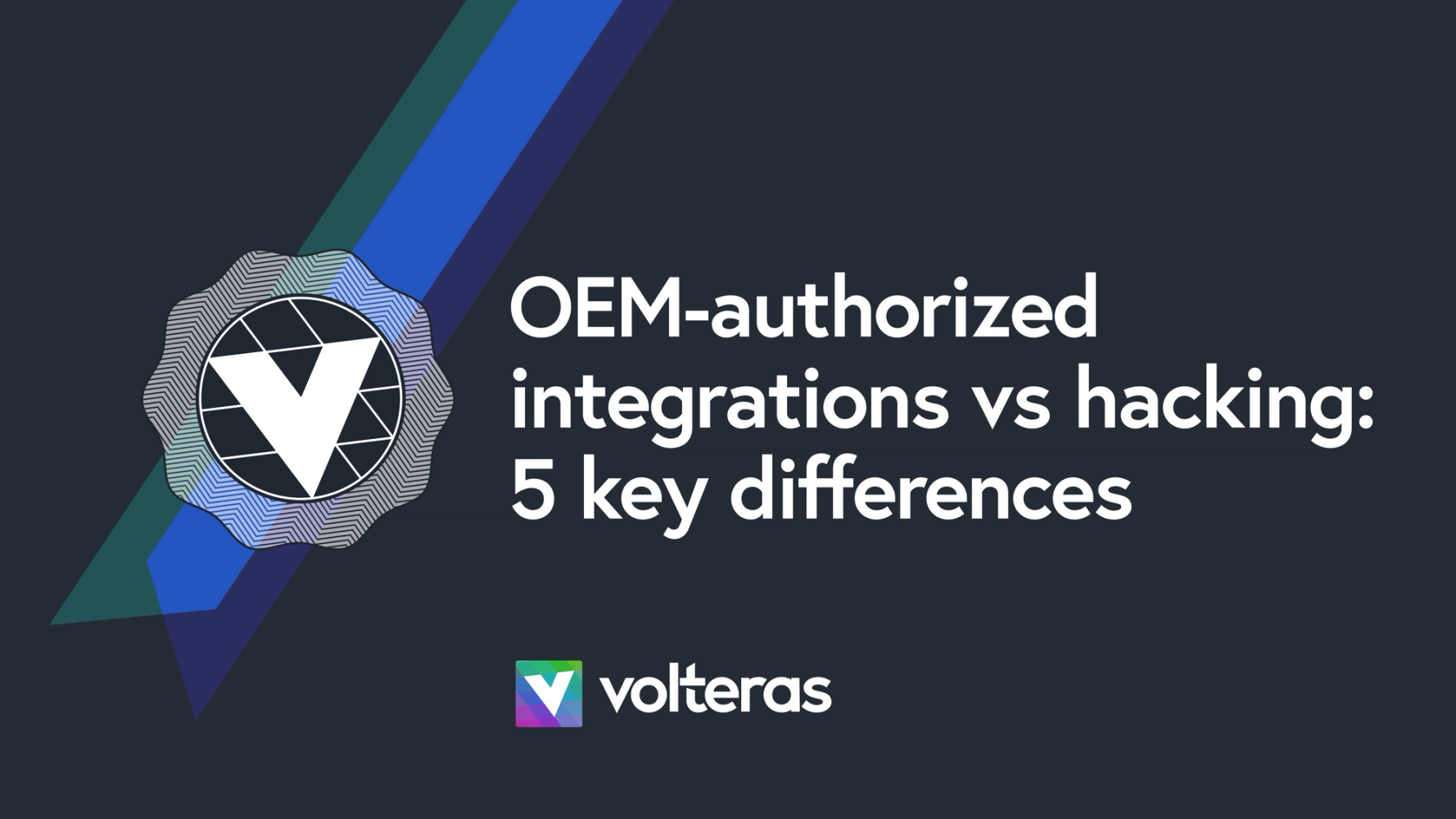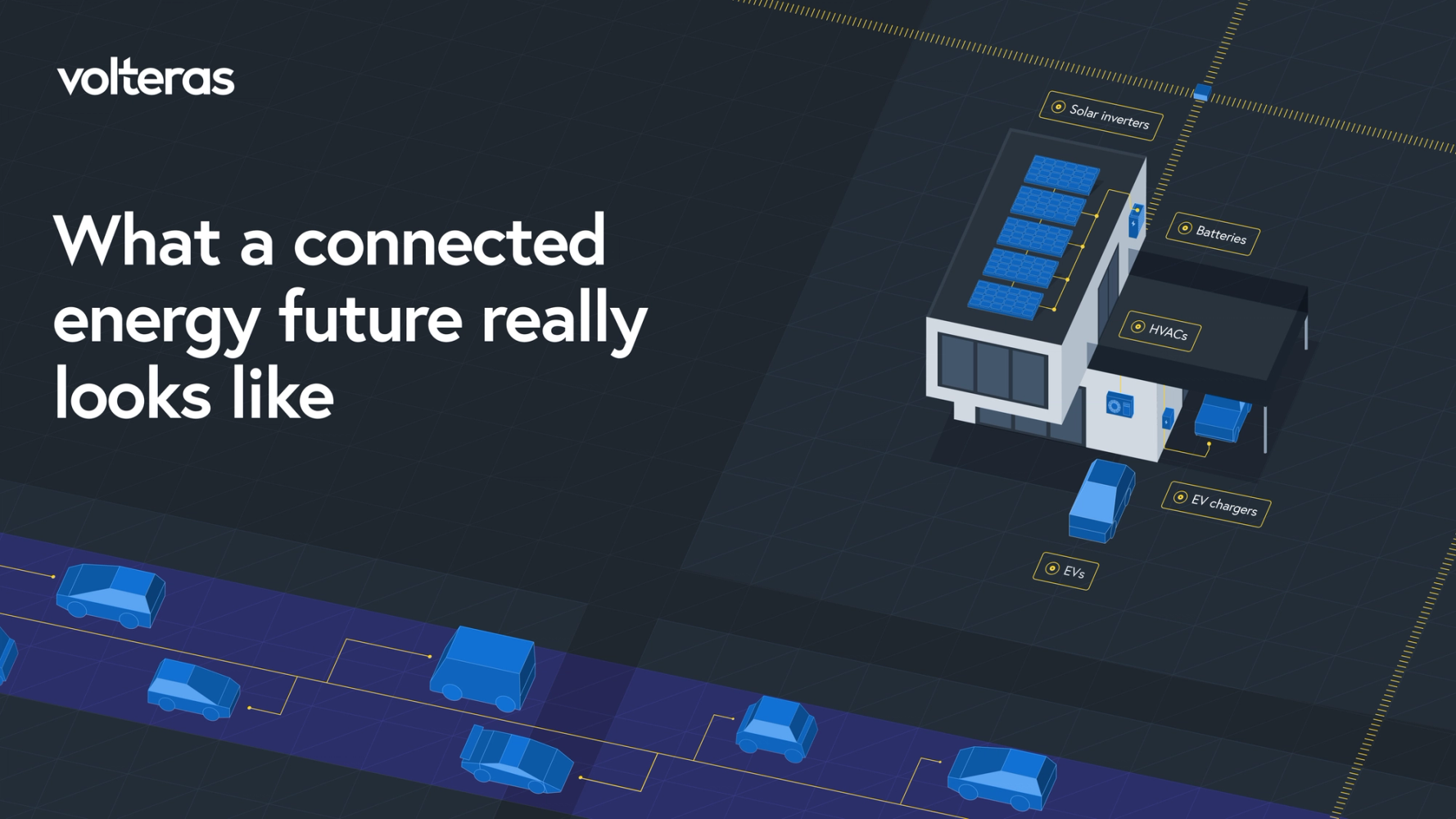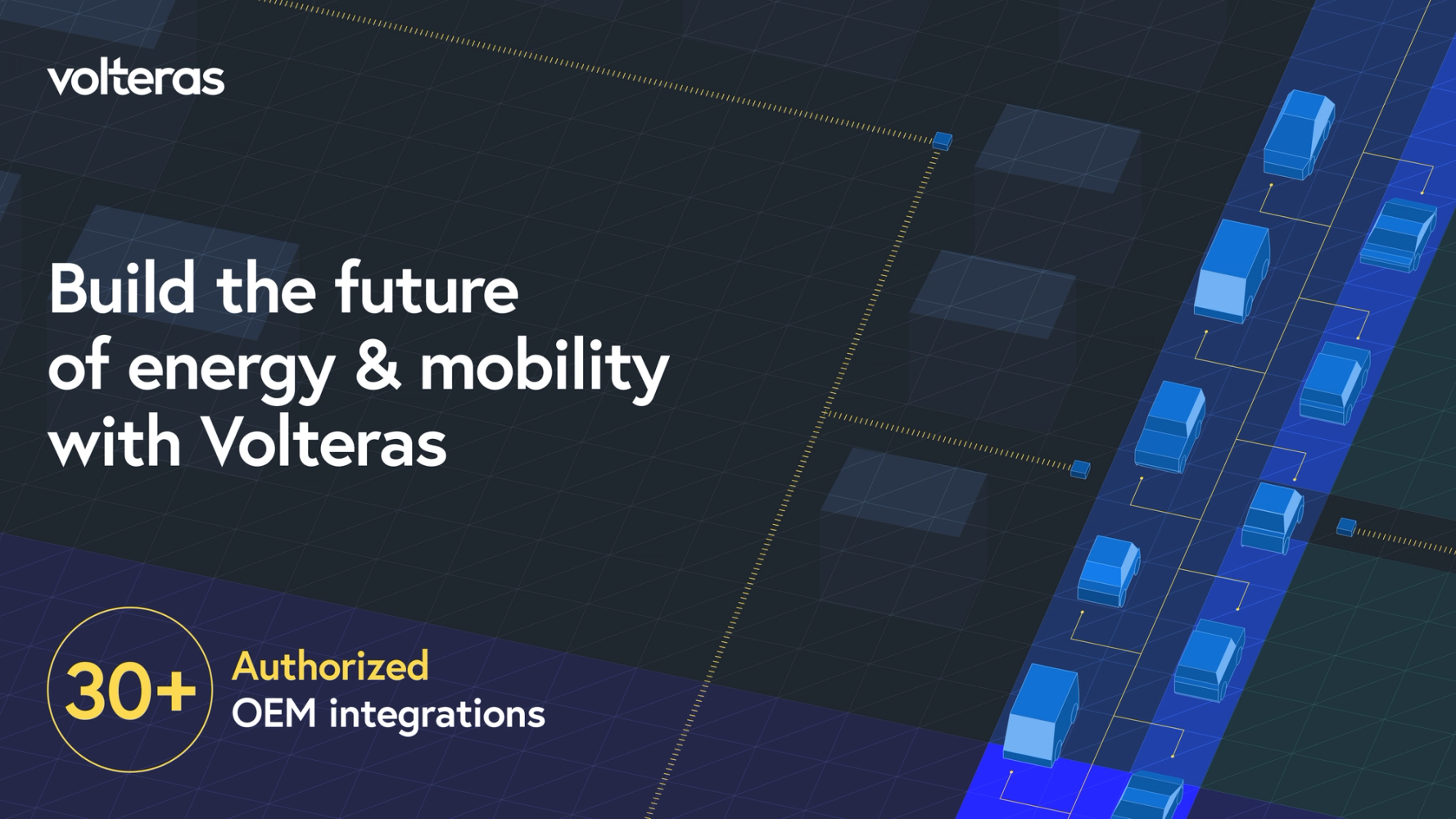

Device data that drives the energy transition
New and growing businesses across the energy or mobility sectors currently face a choice: electrify, or risk falling behind.
These businesses need to be able to access real-time data from EVs and energy devices to make strategic decisions, improve operational efficiency, and boost revenue. Reliable insights can also help their consumers keep energy usage as efficient as possible, and pay less for it. The question is, how should this data be aggregated?
Authorized integrations vs screen scraping
Data providers exist, but data aggregation methods vary widely.
Many providers extract device or vehicle data without permission from manufacturers or automakers, violating terms of service. This method is known as screen scraping. It involves hacking brands’ apps and retrieving data via reverse engineering, rather than direct from hardware devices or official servers. This leads to a number of problems for data quality and reliability.
At Volteras, we overcame these issues by streaming data via authorized integrations and official partnerships with OEMs (original equipment manufacturers). That data is transferred direct from hardware devices or OEMs’ own servers.
The differences in the results for apps or services that depend on authorized data streaming services are clear. Here’s what they look like in detail.
1. Data is streamed in seconds, not hours
Authorized integrations are made possible via designated, open channels connecting to hardware devices and OEM servers. This enables continuous data streaming, which means data is always up to date. When a particular piece of information about a device (known as an endpoint) is requested by the data platform’s software (known as ‘calling’), the information will be transferred in real-time.
The API (application programming interface) constantly calls designated endpoints, asking the device about status. The answer is transferred up to every five seconds, via the reliable infrastructure available to the responder and the caller.
For smart charging companies or virtual power plants (VPPs) especially, continuous data transfer is essential. These business models are based on timing when to sell energy back to the grid or to shift energy demand, so they need data to be as granular as possible. Otherwise, they risk missing key events like a 15-minute fast or rapid charge when demand, and prices, are low.
Providers that use unauthorized data streaming cannot rely on the information being transferred instantly. That’s because there is no purpose-built infrastructure for the information to travel along, so data transfer is often delayed—missing those crucial windows.
2. High uptime guaranteed by OEM SLAs
Authorized integrations for data streaming are formed in collaboration with OEMs via service level agreements (SLAs). SLAs stipulate that a certain level of service must be upheld for data availability, uptime, resolving issues, and security compliance.
Volteras’ SLAs with OEMs agree to 99.9% uptime, which reduces the risk of unpredictable outages or long delays to almost nothing.
If a business is relying on a provider using unauthorized streaming—ie hacking—it depends on interfaces designed uniquely for consumer use. When OEMs update their apps and security protocols, which they do regularly (and which can take hours) this breaks any established connections for unauthorized data streaming. Without a connection to the source, it’s not possible to transfer up-to-date data.
Reliability is a must-have, especially for companies that focus on energy flexibility. A VPP, for example, may want thousands of EVs to stop charging for a short period of time, in accordance with an agreement with a grid operator. Reliable, continuous uptime is essential for this to happen exactly at the scheduled time. If unplanned downtime occurs because the connection fails, the VPP will only not have failed to complete the demand shift they agreed; they also could be liable for losses to the grid operator.
3. Hundreds of new endpoints
With data that is streamed via unauthorized connections, the data set that is available is often limited and not comprehensive enough for advanced energy management.
For example, only basic charging timestamps may be available—such as when a charging session starts and stops—but critical battery-related metrics may be missing. The breadth of new endpoints becomes clearer from fleet segments. Fleet managers can access service due dates, vehicle warning lights and diagnostic lights to reduce downtime. Fleet insurers can retrieve crash detection and accident data for services like pay-how-you-drive cover. Fleet financiers can leverage in-depth charging cycles, battery temperature and available battery capacity to understand resale value of second-hand electric vehicles.
Without these deeper insights, businesses are left with fragmented or outdated information, making it impossible to efficiently manage energy loads, predict charging demand, or ensure optimal battery performance.
4. Data is protected by Oauth security
Authorized integrations ensure that data is transmitted through secure, encrypted channels, owned and protected by OEMs. These enterprises have full control over data-sharing permissions, and they can also enforce strict access policies or revoke access if necessary.
Screen scraping, meanwhile, tends to bypass built-in security protocols, and doesn’t use the OAuth, an industry-standard authorization protocol. These providers often ask users to enter their login credentials on third-party platforms, which generally skip standard cybersecurity practices.
If the companies who screen scape are breached, the vehicles of their customers become a cybersecurity risk. They can be controlled by the attacker—who can even steal a vehicle by unlocking the doors remotely—and gain access to sensitive user information or control certain vehicle functions.
Volteras puts data security first, using OAuth to onboard customers, so data is stored on one API, rather than third-party providers’ platforms.
5. EVs and devices connect remotely, not manually
Only authorized integrations can remotely connect EVs to the API using a Vehicle Identification Number (VIN). OEMs design their systems to recognize VIN-based authentication within their secure, permission-based infrastructure that’s only available for official collaborators. The vehicle data is then streamed direct—there’s no need for physical hardware or manual setup. This means fleets can connect thousands of vehicle in one go, exponentially speeding up the time to onboard large numbers of vehicles.
In contrast, unauthorized screen scraping methods can’t enable remote VIN-based connections because they lack direct API access. Without permissions, screen scraping has no way to validate or establish a persistent connection with the vehicle using just the VIN. Instead, it typically requires users to input their login details manually, which introduces security risks. A fleet manager with 10,000 vehicles would have to connect each vehicle separately, entering the username and password 10,000 times.
A side by side comparison
Here’s a list of the difference between data streamed via authorized automaker integrations, and data from unauthorized hacking.

How Volteras’ data streaming platform helps businesses electrify
As unauthorized data providers continue to stream poor-quality and unreliable data, and also risk being shut down by OEMs by violating their terms of service, an alternative for data streaming is necessary.
Volteras was built as the answer to that problem. The data streaming platform’s business model is focused on transparency and reliability. As the official energy data partner for OEMs, Volteras sets a new standard for data quality in the clean energy sector.
With 27 OEM integrations, and more to come imminently, Volteras has access to an incomparably large array of data and insights. Fleet managers can connect all the vehicles in their fleet at the same time in seconds, without having to manually enter any details.
Meanwhile, SLAs with OEMs provide reassurance that data will be fast, stable and secure. This is the infrastructure clean energy businesses need to build on, in order to innovate and build solutions to increase revenue streams, optimize operational efficiencies and more.
See how Volteras can help your business today.
What a connected energy future really looks like

Build the future of energy and mobility as a Volteras OEM partner

a clean energy future.

